
Eight months ago I decided I needed to understand blockchain, as I was getting questions about it from executives in the classrooms of IMD, and I had nothing intelligent or even coherent to say to them. This article lays out what I’ve learned, what I think to be true, and the questions I still have.
Bitcoin. Blockchain…. Upon returning from a 2-day deep dive together with several senior executives from Audemars-Piguet into the so-called CryptoValley of Zug, Switzerland, my father asked me, “If I wanted to invest $10,000 in blockchain, where or what should I put it into?”. My quick reaction, inspired by a comment from one of my fellow travelers, was “invest in those making the shovels, not in the miners”. When I said that I was not thinking of bitcoin miners.
Eight months ago I decided I needed to understand blockchain. So, I did a blockchain MOOC, bought some bitcoin, bought some ether, and started talking to anyone I could find who seemed to know anything about it. One of them, entrepreneur Thomas Goetschmann, told me he’d been in my shoes 14 months previously but when he understood the unique advantages that blockchain offered he decided he had to take the plunge and start a company. That was enough to push me to investigate further.
As I often do when I’m trying to learn something new, this article lays out what I’ve learned, what I think to be true, and the questions I still have. My hope is that readers will comment and correct me where needed.
“In our lifetimes we are lucky if we get one or two life-changing opportunities, and I think the blockchain offers one of those”. This was from Mona El Isa, CEO of Melonport, one of those making the shovels. A star trader at Goldman Sachs, promoted to VP before her 26th birthday and made it to the “30 Under 30” list of Forbes magazine in 2011. She had planned to take a year off, but was so intrigued by what the blockchain could do that she co-founded her company with Reto Trinkler to create an asset management computer for autonomous crypto asset management. Here was someone who’d already had remarkable success, but was taking a leap into the unknown because of a new technology.
Déjà vu…. Where had I heard talk like this before? Yes, obviously the Silicon Valley dot.com boom of the 90’s. Many of us knew this was important, even if we didn’t understand TCP/IP, but we didn’t know where it would go or how to place our bets. Many took the leap and headed to California. It was all an experiment then, and support for this new experiment today in Switzerland was voiced by Guido Bulgheroni of the Zug Cantonal government, as he talked about the government supporting the experiment by gestures like allowing up to $200 in government fees to be paid with bitcoin and ether, the creation of an e-identity based on Ethereum, and the fact that you can purchase tickets on the Swiss railways with bitcoin. “When we saw a few blockchain entrepreneurs arriving, we sought to work with them, just like other companies that came to Zug. But the speed of the Crypto Valley, how fast it’s grown, is surprising. We’re even adding a new IT school to generate the talent these companies need.”
“We’re not necessarily building our product for today’s market, but for the customers of the future, for those who will come…” A comment made by Mona, and echoed by others, that again brought back déjà vu, as I remember so many dot.com entrepreneurs talking about “getting eyeballs, rather than worrying about profitability”.
At the moment, those like Mona and other entrepreneurs we met, who use and exploit blockchain, are passionate experts. Other than bitcoin speculators the blockchain hasn’t yet crossed the chasm to the general population, to use the terminology of tech marketing guru Geoff Moore. “Blockchain is slow and expensive to use, and the cryptocurrency user experience is far from optimum”, said Lucas Betschart, President, Bitcoin Association Switzerland. He gave us a taste of this by donating CHF 5 of bitcoin to each of us. We watched as he snapped a QR code on our phones and suddenly 0.00063718 of bitcoin arrived in our BDR “wallets”, confirmed in block 514227 (worth CHF 5.35 six days later). But what can we do with this we asked? When will the blockchain “Netscape/Mosaic” moment happen? Marc Andreessen’s invention, and the 1995 IPO that accompanied it and made it well-known, can be argued as the moment when the masses could finally access the power of the Internet.
And like the Internet, blockchain was seen by many in Zug as a technology that will create more entrepreneurs. Investor Mathias Ruch commented, “The tech is easily accessible, so there are many great projects, but also a lot of junk”. Mathias’ investment company, Lakeside Partners, has screened over 1000 startups the past 12 months.
But junk is relative. Nicolas Brand of Lakestar, one of the largest VCs in Europe, directed us to CryptoKitties and asked what we thought. Digital collectibles created through algorithmic breeding…… We all laughed, but this past week, A16Z, a Silicon Valley VC, one of biggest on the planet, invested $12 million in them. If you look further, you’ll see that someone paid $114,000 to buy one of these unique digital cats. Why?
And why are companies like Tezos and Bancor able to raise $232 million and $153 million respectively in Initial Coin Offerings (ICOs)?
Perhaps, as one of our experts said, it’s simply because there is so much cryptocurrency out there, whether created by miners in China and Iceland with access to cheap energy, or those who bought bitcoins as they soared to record highs before Christmas, and these crypto-millionaires have nowhere else to put their money. “For some people in the space it may just be fun money. But many of these people are crypto-experts, and they know the domain, so they’re participating and helping the experiment”, said Mathias Ruch of Lakeside.
A discussion on the legal and contractual issues around protocols such as blockchain and ICOs, with Luka Müller and Aurelia Görner of MME, also underlined the new and experimental context of this nascent domain. Today 80% of their work is in blockchain applications in various sectors, but predominantly in financial services. As Luka said, “Certain applications – often referred to as “Cryptocurrencies” - are a sexy proof-of-concept. They are a way to test and prove what protocols such as the blockchain and the layers on top of it can do!”.
Two terms that we became fluent in during our expedition, and the laws around them, were KYC (Know Your Customer) and AML (Anti-Money Laundering). It seems that many in Zug and across Switzerland are worried that CryptoValley will become known as KleptoValley. To those with long memories they might liken this to the “pump & dumps” of the Internet era, promulgated by some of the best-known investment bank analysts around. Seriously, did Merrill Lynch’s star analyst really believe that a company that eventually went from IPO to liquidation in 268 days, Pets.com, was a good investment?
And even if there is a lot of junk and scams out there, investors are still looking, but the good ones still look for the same things. “I am focused on blockchain teams that create real world usage of the technology by individuals and enterprises and do that at scale”, said Nicolas Brand at Lakestar, and this was echoed by Daniel Gutenberg of VI Partners: “I started investing in blockchain in 2012 after learning about it from Brook Pierce at Singularity University. But my criteria are still the same, teams that can execute on a day-to-day basis, and a product that is 10 to 20 times better than existing solutions. But with such a high bar, I’ve looked at over 100 startups recently, and not found a single one worth investing in”.
And what is blockchain? Or distributed ledger technology? One definition is that the blockchain is just decentralized accounting software where the accounts can’t be changed because they’re located on a multitude of computers. As Søren Fog, one of the coiners of the “CryptoValley” term, said, “Imagine a stack of papers digitally linked - or chained - to each other, so that adding a new paper on the top and digitally chaining it to the underlying stack makes it impossible to change that paper or remove it, unless you control millions of computers at the same time”. Another metaphor was GoogleDocs, but on 10,000 computers, not just on 2 or 3, and with a digital thumbprint of the document every time it changes. Blockchains allow unparalleled efficiency in tracking process, and then on top, thanks to Ethereum, we have smart contracts that can issue compensation or an order when a process is completed.
A simple example is Etherisc (or Fizzy by Axa), airline delay insurance applications which can issue policies and pay out valid claims completely autonomously. Before your flight they show you how much you’ll be paid if your flight is late, and, if you think it’s worth it, you purchase the insurance online. And then public airline databases are used to generate compensation if your flight is delayed a certain time. Everything is stored in the blockchain, and can’t be changed. No negotiations with the airline, no need to argue with anyone. If your flight is late, you get paid.
In his latest book, Block Change, my IMD colleague, Arturo Bris, quotes Antony Lewis, “Blockchains are a new type of hammer that can hit new nails. We don’t fully understand what the new nails look like yet, so let’s keep hitting old nails until we understand the new hammer.” With Etherisc and Fizzy perhaps we have old nails being hit with new hammers. Whether thought about in this way or not, this is what we experienced in the 90s with the Internet. Fortunes were made, investments were lost, but many people learned what the Internet was good for, and where it made no sense whatsoever. Pets.com? Webvan? Some of the founders and early executives used their learnings (the new nails) and went on to considerable success (i.e. Webvan founders at Amazon, Julie Wainright at RealReal).
So, if I summarize my thoughts and learnings:
Blockchain is an enabling technology that will cause a Cambrian explosion of new entrepreneurs, products, services and companies.
Cryptocurrency speculation will end with a bang, just as the dot.com era did, and many will lose a lot of money, but it will transform into something else that we will all end up using. Much of its use may be behind the scenes, but it will be there.
Don’t get wowed by the amounts you see in the ICOs. Many are scams, and the rest are crypto-investments (fun money).
Learn now. Like my fellow travelers, the Audemars-Piguet executives, get out and learn about blockchain. Use Fizzy or Etherisc or other blockchain applications. Get a cryptowallet and buy a few ether or bitcoins. Examine some of the existing pain points of your business and ask if somehow blockchain could reduce or solve them.
And let’s learn from the last time we had a fundamentally new technology that changed our world. Look back at the Internet era, learn from the dot.com boom and bust, and the current deer-caught-in-the-headlights situation of some of the tech titans, and build on those lessons rather than repeating the mistakes of the past.
If you must invest, either wait a bit longer and pay more, or go now for the pioneering talented entrepreneurs, some building and selling the shovels, like Mona El Isa, Marco Abele, Walter Strametz, Søren Fog, Mathias Bucher and others who both understand blockchain and understand execution and business.
Or, if you prefer that someone else places the bets for you, invest with people like Daniel Gutenberg, Mathias Ruch or Nicolas Brand. As Nicolas said, "It is our joint responsibility to mature this still nascent blockchain ecosystem. The best entrepreneurs in this space have a long-term vision above and beyond the speculation we have seen in the last 12 months - and it is our role as the investors to help them achieve it."
Remember where you were in 2018, or whenever it was that you first heard of the blockchain, as you’ll want to recount this story to your kids and grandchildren.
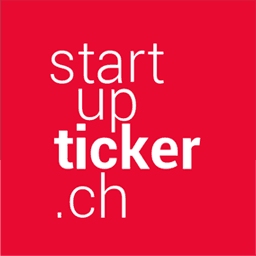

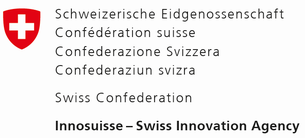
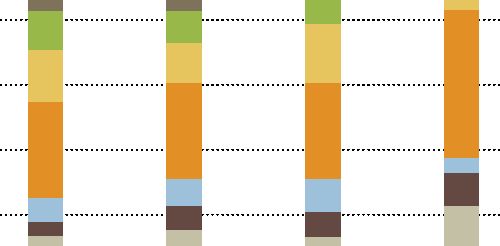

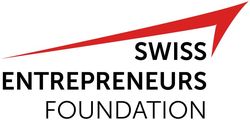


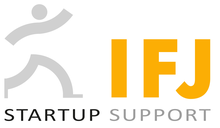




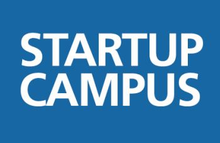




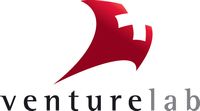



















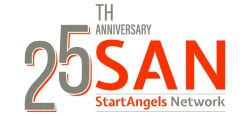

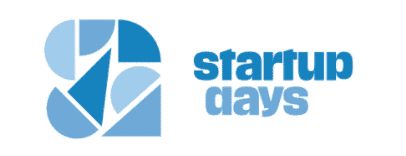








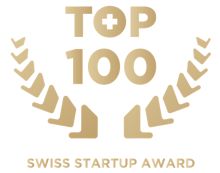





Mathias Weiss @ 06.04.2018 20:49
Mind catcher article! Urged me to share with my workmates! ;-) Cheers Mathias
Please login or sign up to comment.
Commenting guidelines